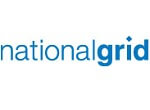 With demand-side response (DSR) being cast aside in recent months with the introduction of other energy market reforms and policies, it comes as a surprise that it’s now back in the limelight.
With demand-side response (DSR) being cast aside in recent months with the introduction of other energy market reforms and policies, it comes as a surprise that it’s now back in the limelight.
Demand side response is the scheme where customers are incentivized financially to lower or shift their electricity use at peak times. This helps to manage load and voltage profiles on the electricity network.
National Grid claim that they will rely on DSR measures more than half of the time by 2030. They expect to balance the UK’s electricity supply rather than generating more.
National Grid’s head of commercial operations Duncan Burt said:
“Even three years ago I would not have said that demand-side response would play as big a role as we expect it to now.
National Grid has long procured limited demand-side services and encouraged demand-side management but the increased deployment of intermittent renewable energy, advances in demand-side technology and a greater need for business to reduce energy costs means that an active demand side market is critical.”
Generation has always followed demand but the idea now is to turn it around so demand follows generation.
It will be imperative to get the public on board and the addition of smart meters should help customers to manage their demand and the peak times at which they use energy.
This can only be created by greater market education of the products on offer as well as engaging the consumers to get on board.
